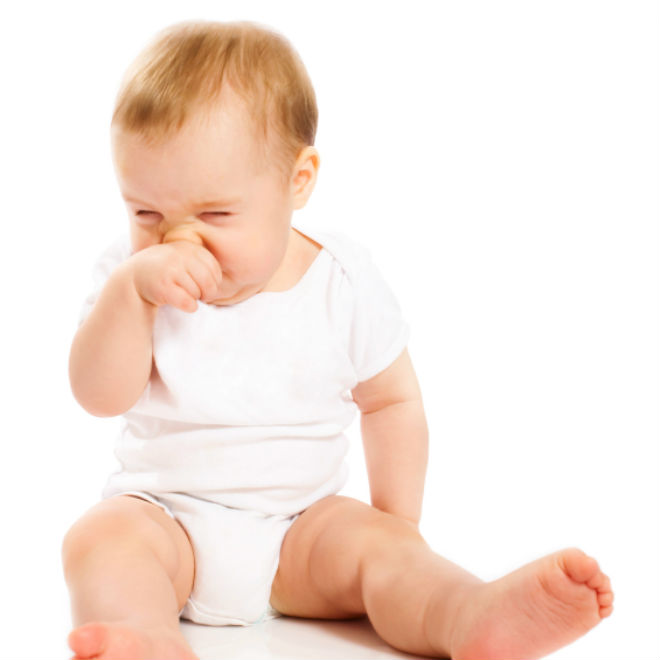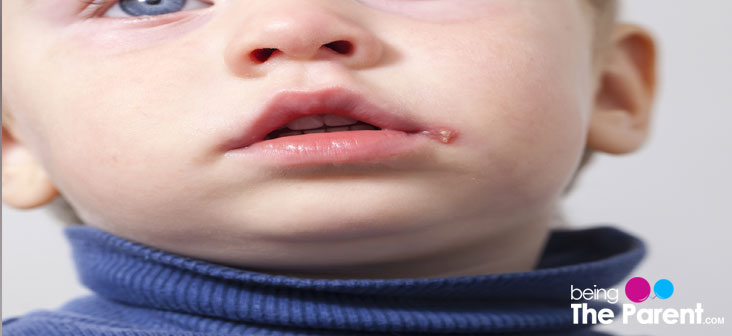Colds in Babies

Contents:
- Baby Cold Sore
- What Symptoms of Suspected Flu Must Be Paid Attention To?
- What Symptoms are Most Dangerous?
- When the Doctor Should Be Called to the Baby?
- How to Treat Colds in Children?
- Should the Temperature be Sent Down?
- Can a Child With a Cold Be Bathed?
- When a Child Can Be Considered Recovered?
- When Can a Baby be Taken for a Walk After a Cold?
- When Can You Go to the Kindergarten or School After Colds?
- When Can You Return to the Sport After a Cold?
- What are the Ways of Preventing Children's Colds?
Baby Cold Sore
In Pediatrics it is considered normal if the child catches a cold or ARVI no more than 4-6 times a year. The peak of incidence usually falls on the first year of kindergarten or school. When the child catches a cold for the first time in his life, you must consult with a physician. It is important to create comfortable conditions for the sick kid, ventilate the room and not send the temperature down without extreme necessity. Compliance with day regimen, balanced diet and developing resistance to the cold can help prevent frequent colds.
What Symptoms of Suspected Flu Must Be Paid Attention To?
When the child under 1 year catches a cold you need to pay attention to the following symptoms: change of skin color, breathing problems, coughing, sweating, weakness, disruption of feeding schedule, any other unusual symptoms.
It is especially important to monitor changes in body temperature, rash, loss of appetite and stool disorders. Mom should be put on alert, if the child has become more excited or on the contrary sluggish, sleeps long, cries in his sleep, etc.
Special attention should be paid to the temperature higher than 38.5 °C and below 36 °C. In addition, if a child for more than three days has had the temperature of 37.1-37.9 °C – it should also cause concern, as there may be a symptom of a slowly developing inflammation (pneumonia, pyelonephritis, etc.).
The presence of these symptoms must be the occasion for a consultation with the doctor.
What Symptoms are Most Dangerous?
A sharp cry, paleness, cold sweat, sudden weakness with decreased temperature. The emergence of an unusual rash. Loose stool more 5 times per day, repeated vomiting. Convulsions, fainting, impaired consciousness, inadequate reaction of the child to question-answer. Suddenly gravel voice of the child. Respiratory disorders. The appearance of swelling, especially on the face in the head and neck area. Sharp pain in the stomach. Complaints of headache for the first time. These symptoms require immediate consultation with the doctor. If they appeared suddenly and are dramatically increasing, it is necessary to call an ambulance because a situation, threatening the life of a child, can occur.
When the Doctor Should Be Called to the Baby?

Phone consultation with a pediatrician, that parents trust, helps you decide how much you need a face-to-face examination in each case. If there is no agreement between the parents about treatment, it is better to call the doctor, whose opinion trust all "warring parties". The doctor should be called if this is the first illness with a fever of a child of up to one year, or if the child suffers from any symptoms unusual to parents or if something worries the parents. In addition, if parents treat the child and on the third day there is no improvement, the kid also must be examined by the doctor.
How to Treat Colds in Children?
Approaches to the treatment of colds can drastically differ with different doctors. Some tend to be overcautious and prescribe a large number of drugs, others prefer a wait-and-see tactics and soft treatments. In any case, it is important to remember that a cold is the exercise of immunity against infection, and for a child who doesn't have chronic diseases, they do not represent a special danger. Waiting tactics and monitoring allows the immunity of the child to learn how to cope with the constant load in the "big city". Light meals, warm drink and rest, as well as "folk methods" of treatment usually are enough to help the child recover faster and avoid complications.
Should the Temperature be Sent Down?
The temperature increase is the main way of the fight of the body with infection, because, on the one hand, when the temperature rises the metabolism speeds up, making the immunity work more efficiently, and, on the other hand, the speed of the spread of viruses and bacteria slows down.
Despite the widespread practice to send the high temperature down to ease the patient's condition, and pediatricians commonly advise to reduce the temperature of a child if it is greater than 39 degrees, there is no therapeutic effect of this procedure. Therefore, if the kid does not have chronic diseases, it is best to focus not on the readings of the thermometer, but on the well-being of the child and, if possible, to endure the high temperature as long as possible.
First and foremost, you need to watch what the child wants: If the temperature rises, he's having the chills, you should help your baby quickly warm up using warm clothes, blankets and hot drinks. When the temperature reaches the maximum, the chills pass, and a baby's skin can get red, and there can be sweat on the forehead. At this point you need to possibly put the blanket off the kid to make him easier to withstand the calor. In addition, you can use friction or a warm bath – all this allows you to reduce the temperature by about one degree. It must be remembered that the sharp decrease of temperature by medications, as well as its usual followed sharp increase, can provoke a febrile convulsions. In addition, with strong temperature changes strain on the cardiovascular system is increasing.
The temperature should be sent down when it rises above 38.5-39 degrees. It is better to use candles or syrups based on ibuprofen or paracetamol in a dose according to age. The use of febrifuges on the basis of aspirin and analgin in children is unduly risky, because aspirin can cause liver failure and analgin can lead to a reduction in the number of leukocytes to dangerous levels. It must be remembered that the sharp decrease of temperature by medications, as well as its usual followed sharp increase, can provoke a febrile convulsions. In addition, with strong temperature changes strain on the cardiovascular system is increasing.
Can a Child With a Cold Be Bathed?

Recommendation not to wash during illness appeared when there was no hot water in the homes, and people went to wash in the baths. Now, if there is a bath tub and hot water in the house, bathing is a great way to ease the condition and lower the temperature, so you can and should bathe the sick child, if he does not mind. When bathing the sick kid, it is important to avoid drafts. The water should be warm, about 1 degree below the child's body temperature, but not above 39 °C. It is necessary to regularly add hot water in the tub, so that the child does not get frozen.
When a Child Can Be Considered Recovered?
If the child has improved mood, appetite, normal temperature and activity, as well as there is no runny nose, cough, vomiting or diarrhea, you can consider the cold treatment to be successful.
When Can a Baby be Taken for a Walk After a Cold?
If a child is cheerful, active and wants to go for a walk, and the weather allows, the first going for a walk can be done in 2-3 days after temperature returns to normal. It is important that the first walk after the illness should last no more than 20 minutes. And the weather has to be good. Early walks are not recommended , if a temperature is below -10 °C, there is wind, blizzard or rain.
When Can You Go to the Kindergarten or School After Colds?
It is not best to return to children's collective earlier than one week after the child has recovered, because just recovered child is particularly sensitive to viruses and can easily become ill again, if he returns too early to kindergarten or school.
When Can You Return to the Sport After a Cold?
Not earlier than 10 days after all symptoms are gone.
What are the Ways of Preventing Children's Colds?
The best way to prevent influenza is vaccination. Other ways to prevent viral infections: You must comply with the general hygiene – use individual towels, kitchenware, wash hands with soap after visiting public places. Regularly ventilate the room, maintain in it the temperature of 20-24 °C and humidity not less than 40 %. Regularly wet clean living quarters. In addition, a balanced diet, regular exercise, permanent day regime, developing resistance to the cold and going for a walk are a great way to strengthen the immune system.